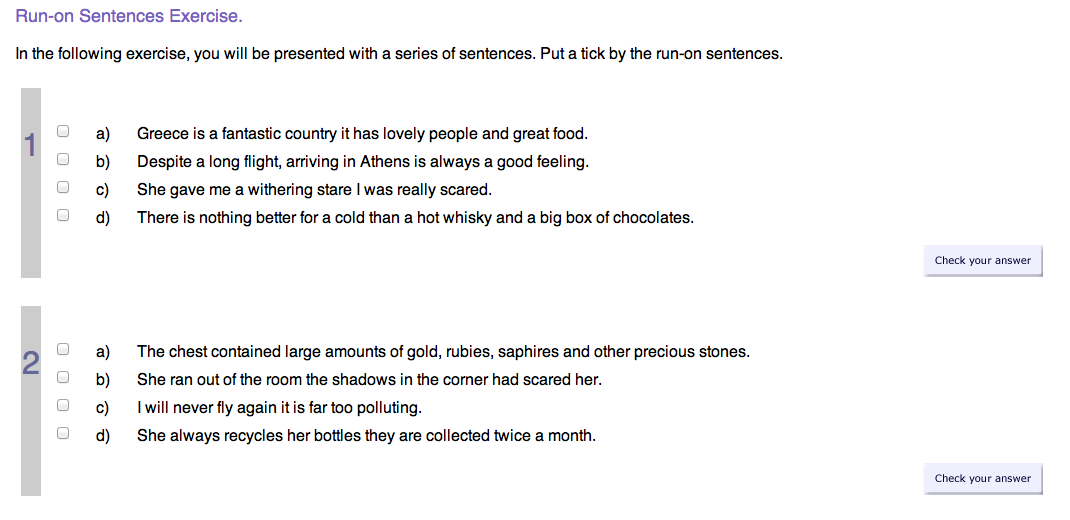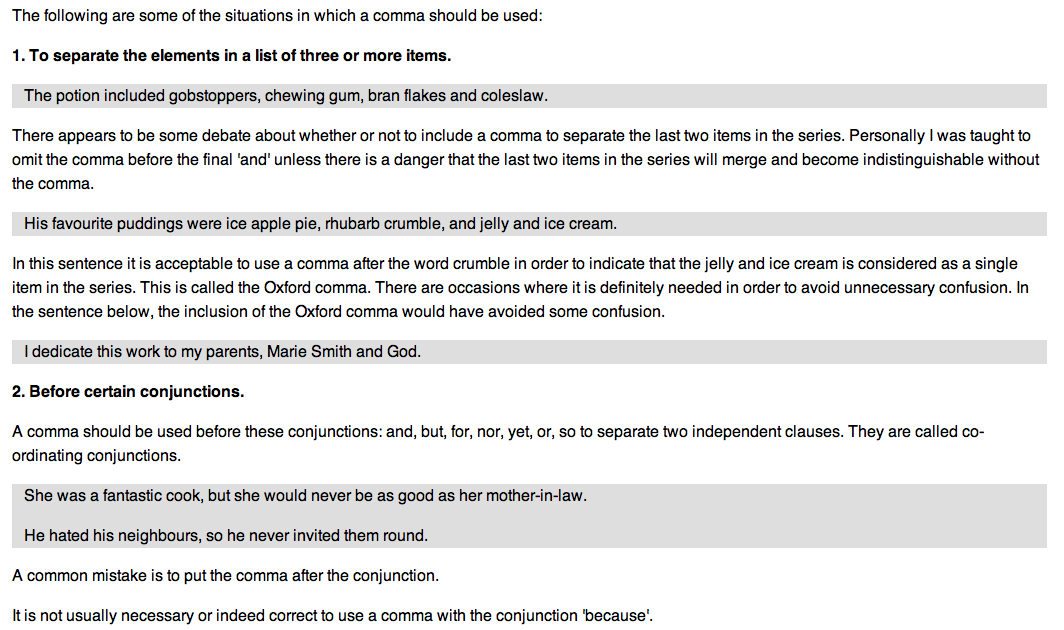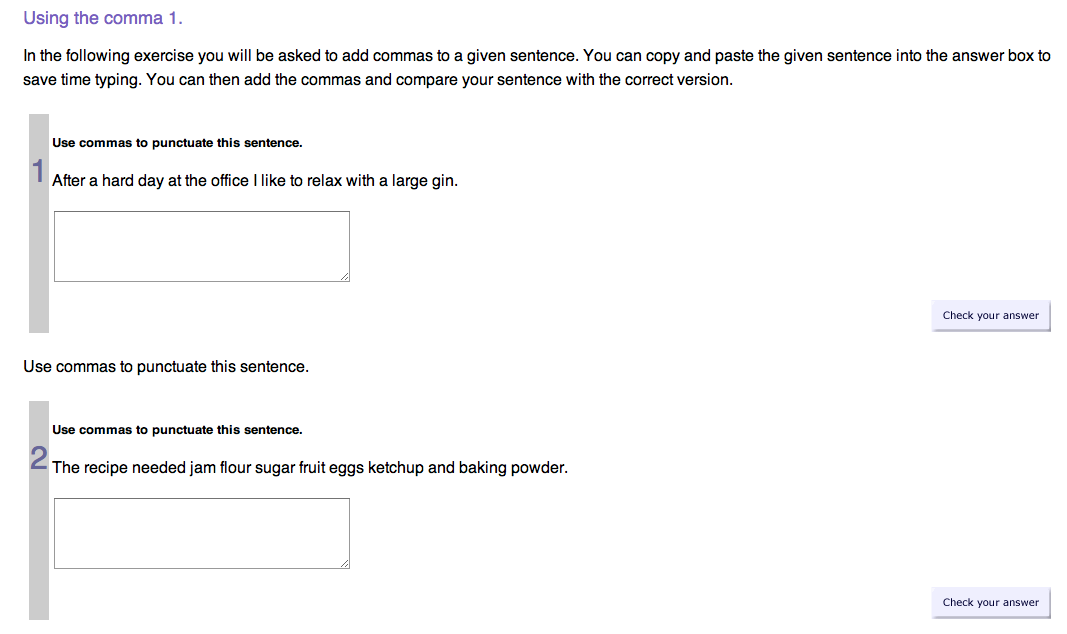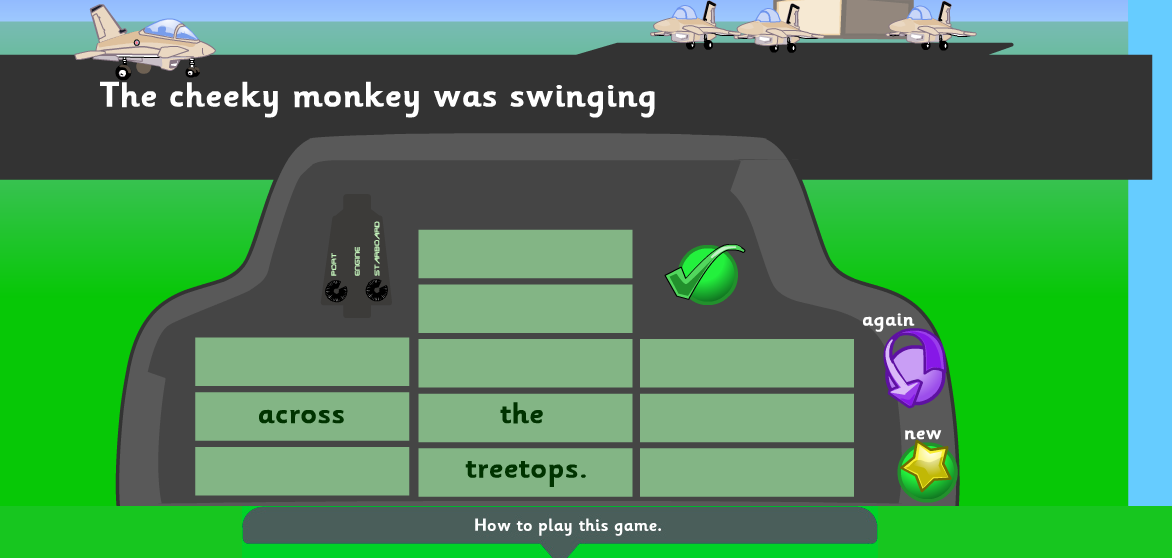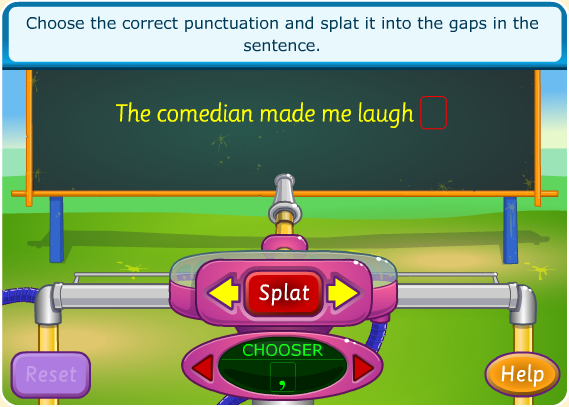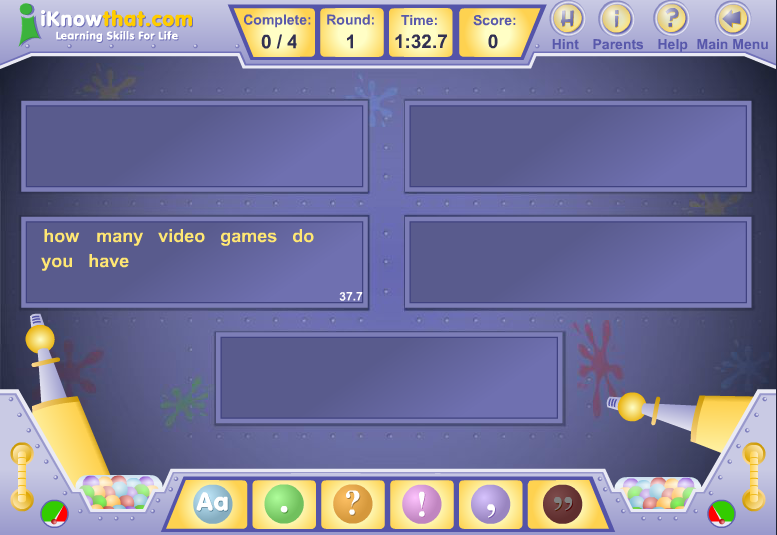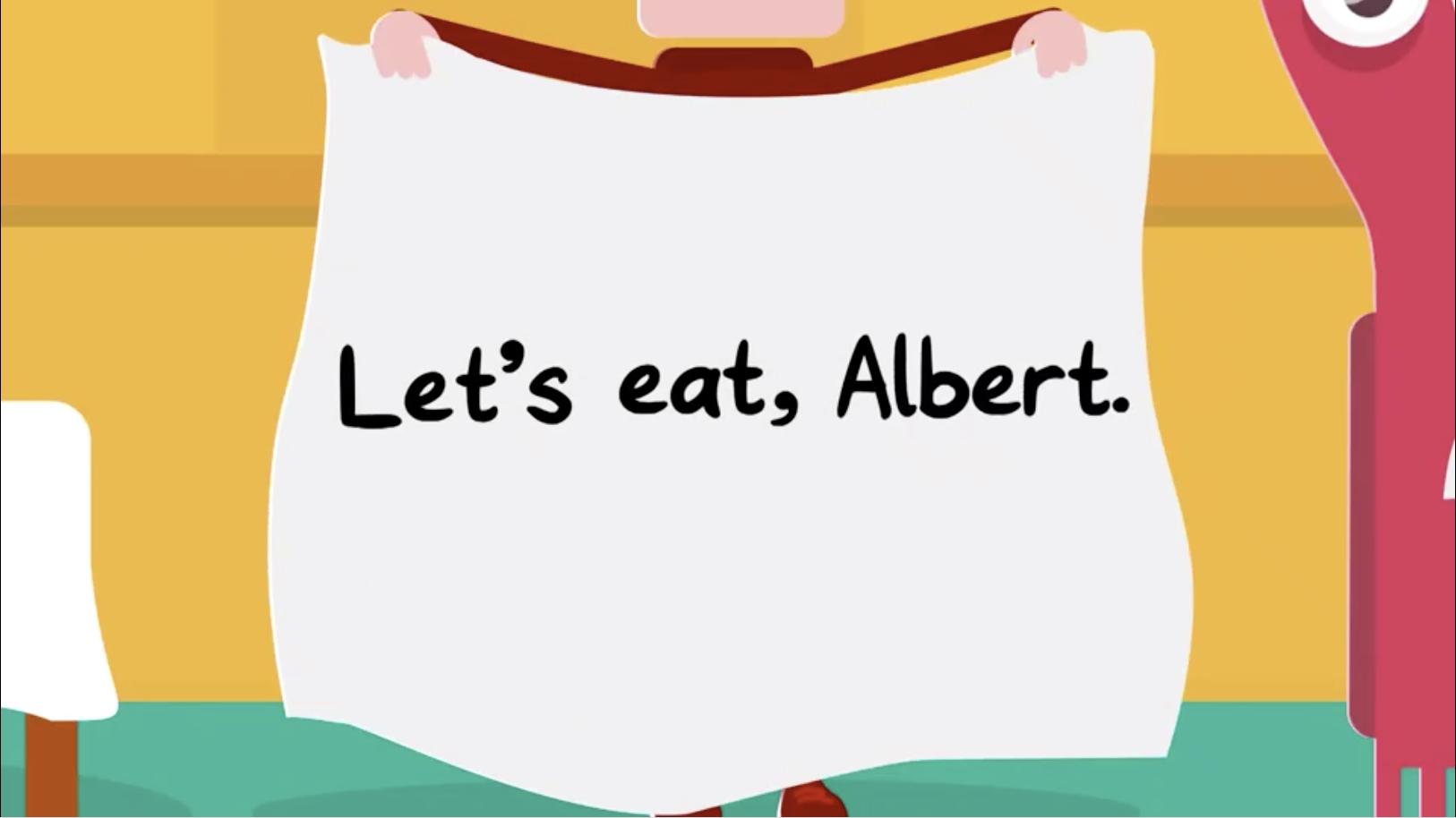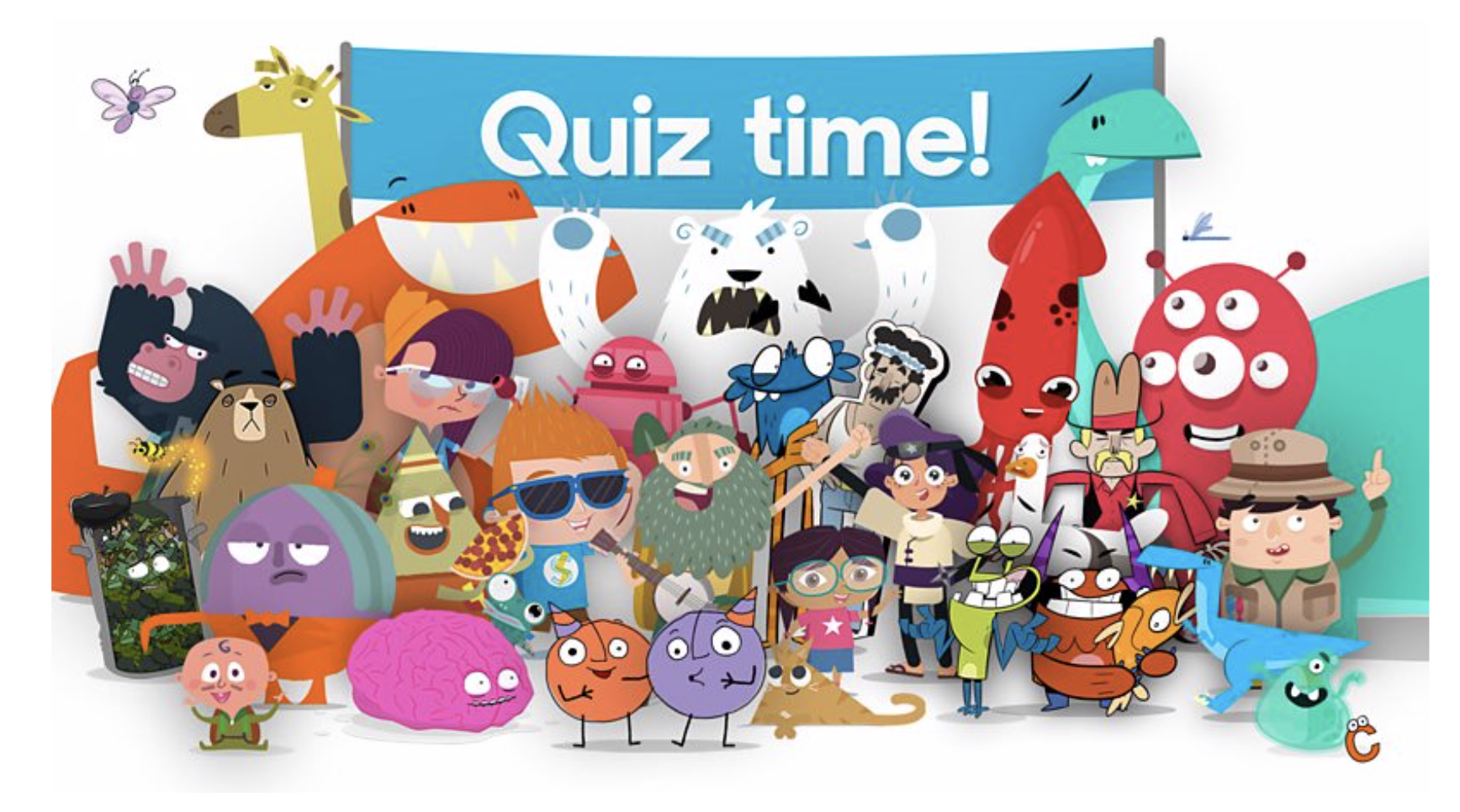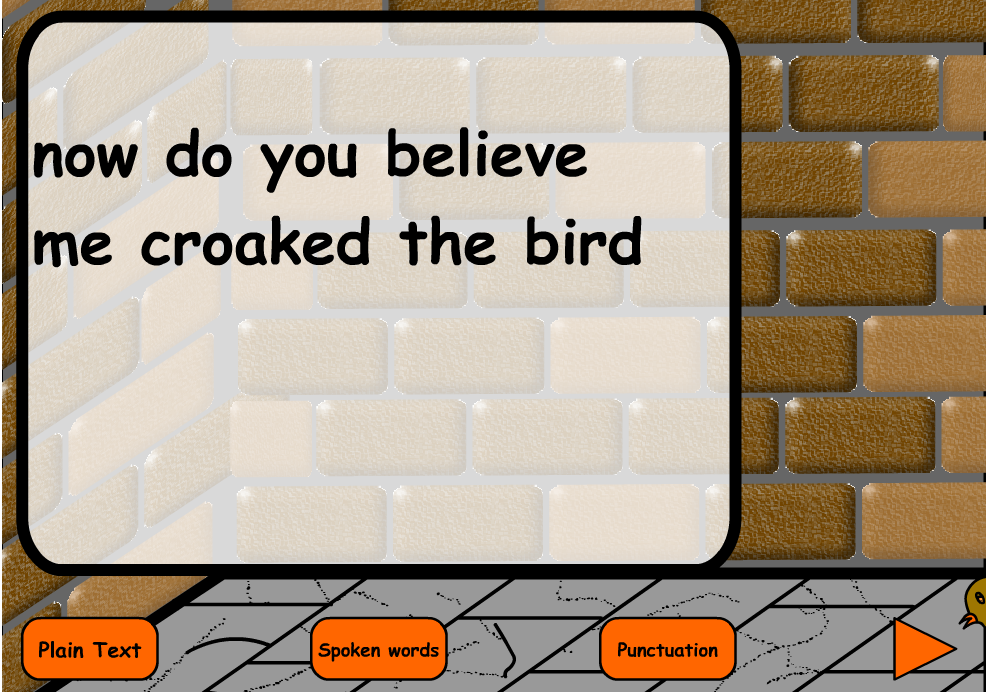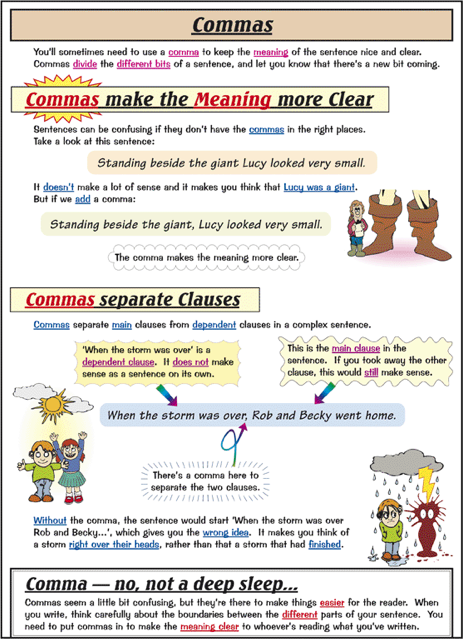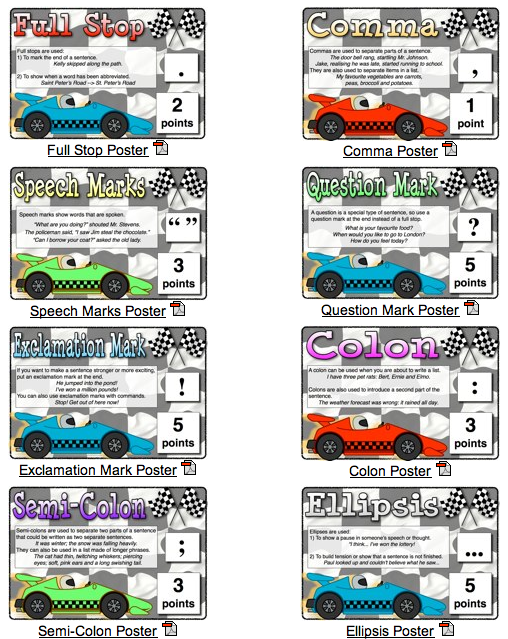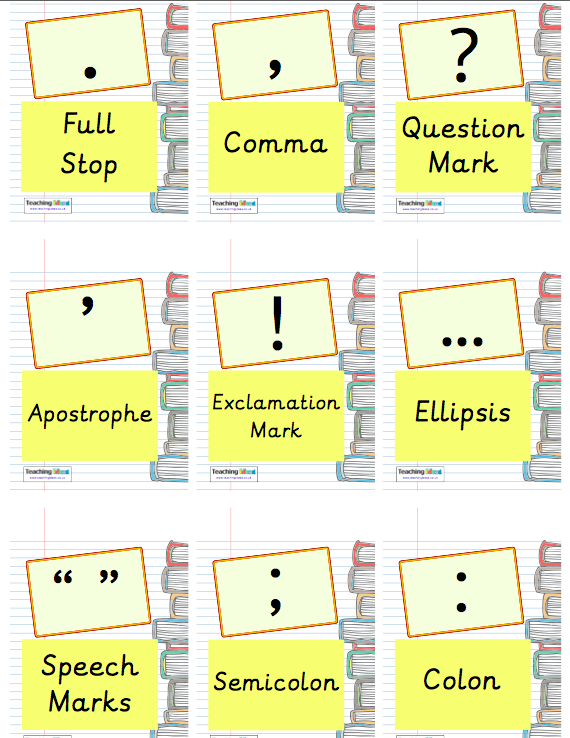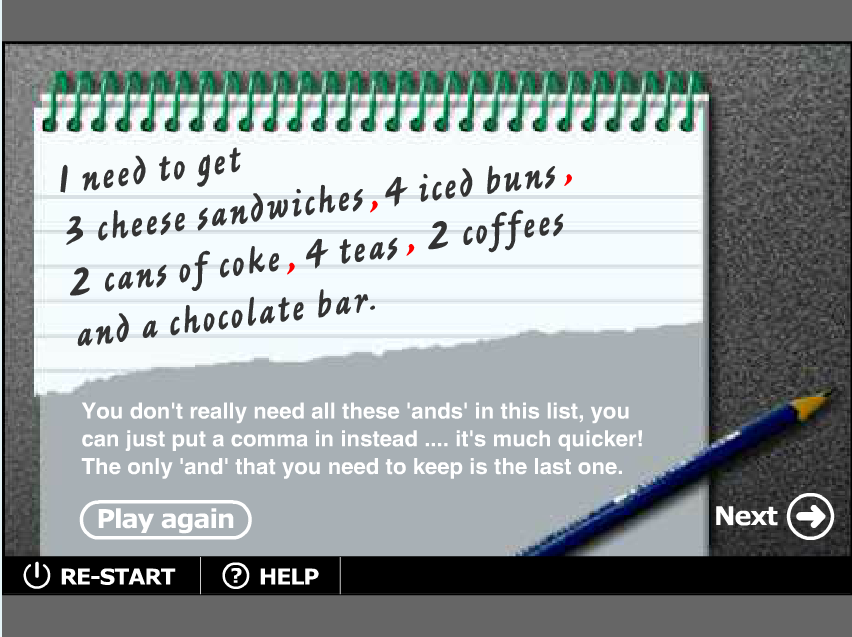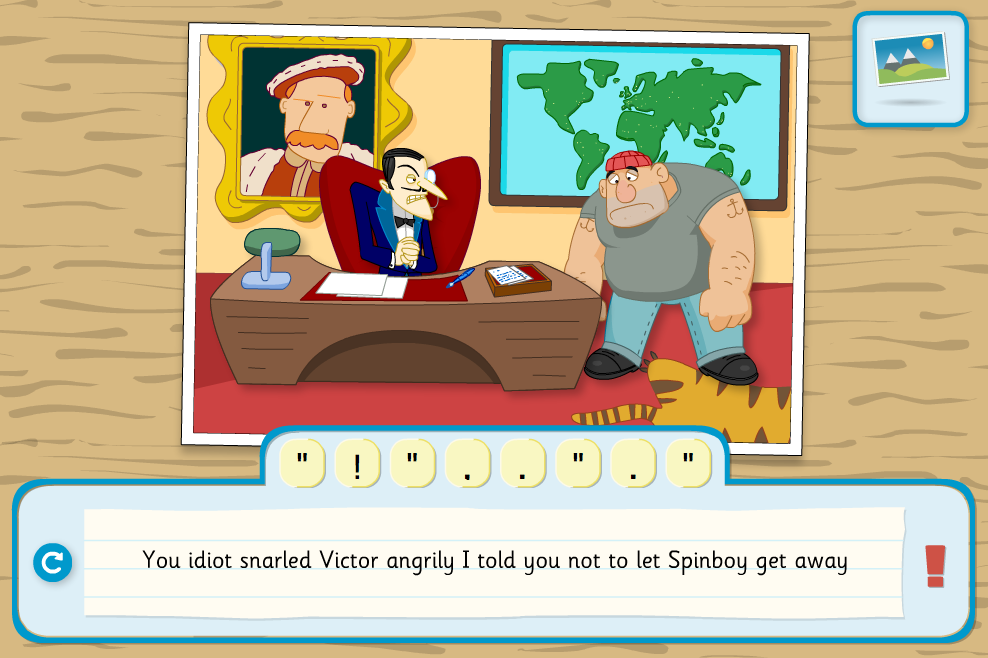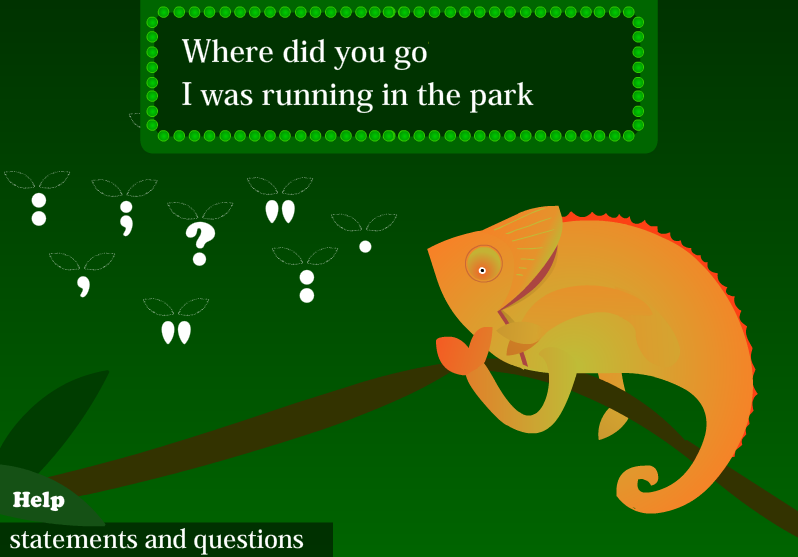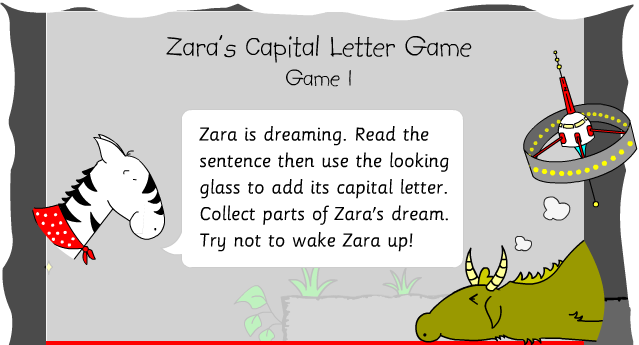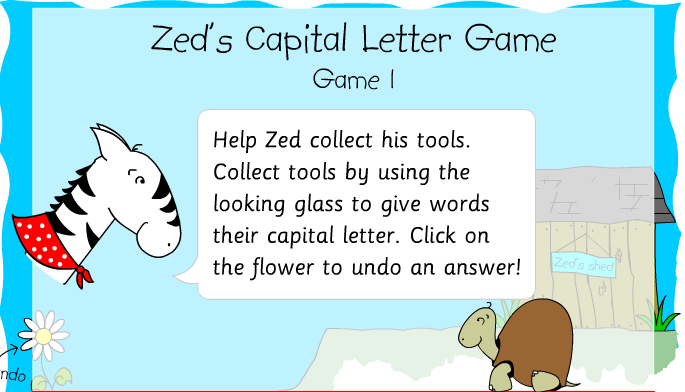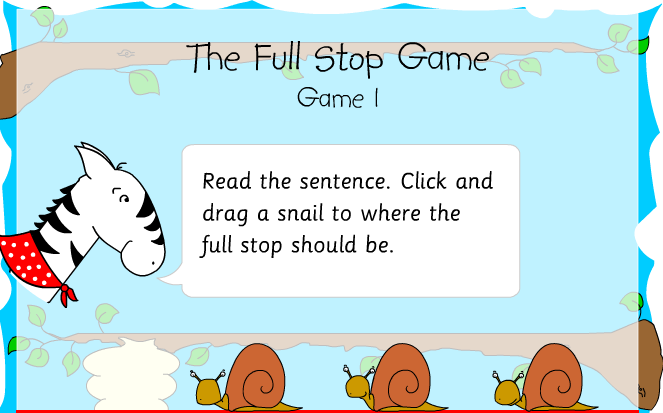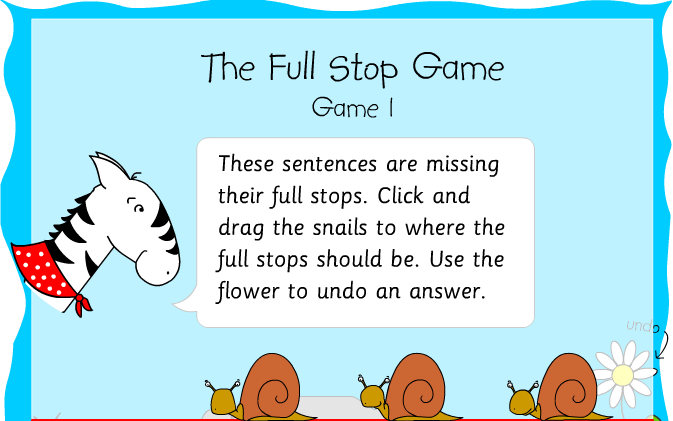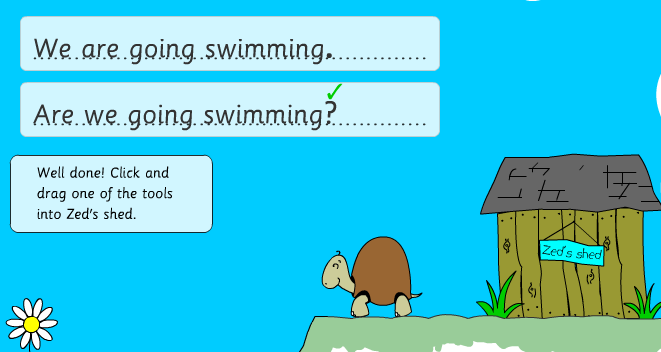Punctuation
Writing Checklist
This is a fantastic resource that allows your class to reflect on their learning and self assess and correct when writing.
The children have a writing checklist of ways to improve their writing (giving examples) that they can use independently.
This resource explores:
- Capital Letters
- Finger Spaces
- Letter Formation
- Full Stops
- Wow Words
- Sentence Starters
- Proofreading
Run-on Sentences
This resource allows your children to develop skills in recognising and punctuation run-on sentences.
The children must tick the sentences that are run-on. They could also write the sentences in their book adding in the missing punctuation.
When to use a Comma
This comprehensive list shows the instances that a comma is required.
This great resource explains and gives examples to ensure you teach the use of the comma in the correct way.
Commas
This activity develops understanding of using commas.
We all know that there are many instances whereby a comma is needed. This resource explores a range of sentences which require commas.
Finding Capital Letters and Full Stops
In this punctuation game, the children are challenged to find the end of the sentences and add in a full stop.
Once the full stop has be added, the children must then immediately click the next letter to add a full stop.
Punctuate the Paragraph
This is a great interactive learning game to help your Ks1 children with their punctuation.
The children must drag and drop the correct piece of punctuation in the correct place in the text.
The children can progress through different rounds if their punctuation is correct.
Punctuation
The children can work through a variety of sentences and punctuate them.
The great thing about this punctuation game for KS1 is that the children are given hints to help them.
Runway
This activity allows you or the children to create sentences and then place them into the correct order so they make sense.
This is a great resource to encourage children to write a sentence and then check over what has been written for self assessment purposes.
Punctuation Activity
Check out this great punctuation game for kids. The children will have fun completing the grammar practice exercises that help students learn about important English language punctuation such as the full stop, question mark, comma, apostrophe, exclamation mark and inverted commas.
Read the sentences, aim the target and fire the correct punctuation where you think it should go in the sentence.
Paintball
In this activity, your KS1 children are challenged to recognise where the correct piece of punctuation should go.
This resource provides a fun and meaningful way for children to recognise and place the piece of punctuation in the sentences independently.
Punctuation
This is a great resource that explores: apostrophes and contractions, possessive apostrophes, semi-colon, hyphens, dashes and more.
At the end your class can complete the quiz to check their understanding.
Typewriter
Another great punctuation game that helps your children remember their capital letters and full stops.
Level 1 is for Capital letters and punctuation.
Level 2 is for run-on sentences, apostrophes and quotation marks.
Add in the Punctuation
This is a great learning resource that allows children to correct the sentences by adding in punctuation.
Commas for Lists
In the punctuation game, the children must locate the sentence that is missing a comma.
Punctuation Revision Sheets
This is a wonderful learning resource that allows your children to recap the main points relating to commas, clauses, speech marks, its and it’s and comparisons.
Punctuation Points
A fantastic way to encourage children to punctuate their writing.
Different types of punctuation have a value attached to them. When children are assessing their own writing (or the writing of others), they count the total value of the punctuation that they have used.
Punctuation Flashcards
Let children have a copy of these cards to refer to whilst writing. You could also copy two sets and play pairs / snap with them!
Commas in Lists
This great interactive resource emphasises the need for using commas in lists. We all know it is boring to see the word ‘and’ and this activity allows the children to replace the ‘and’ with a comma. Super resource for KS1 children!
Adding Speech Marks
Drag punctuation marks into place. Another activity involves writing your own sentences.
There are four scenes for punctuating, or if you choose ‘custom’, you can writing in your own full sentence.
Drag punctuation into place and press the greyed button to pull it back out again, if placed incorrectly.
Statements and Questions
In this activity, the children are challenged to recognise the difference between and question and a statements and add in the correct punctuation to the text.
Capital Letters Worksheet
A great set of differentiated worksheets that allows children to add in capital letters, full stops and commas for lists.
Capital Letters (Beginners)
In this interactive game, the children must add the capital letters into the sentences. When the children place the capital letter in the correct place, they get a section of a puzzle to create.
In this game there are five different levels to complete. The capital letters are at the beginning of the sentence.
Capital letters (Advanced)
This game builds on the previous game by enabling the children to add the capital letters into groups of sentences. The sentences explore capital letters at the beginning of sentences and for names.
Full Stops Game (Beginners)
In this interactive game, the children must add the full stops into the sentence. When they place the full stop in the correct place, they get a section of a puzzle to create. In this game there are five different levels to complete. The full stops are in single sentences.
Full Stops Game (Advanced)
In this interactive game, the children must add the full stops into the sentences. When they place the full stop in the correct place, they get a section of a puzzle to create. In this game there are five different levels to complete. This time there are more full stops to add so the children must find the end of one sentence and the beginning of another.


